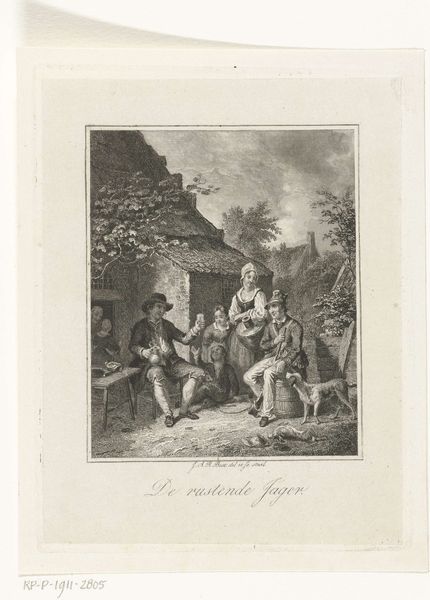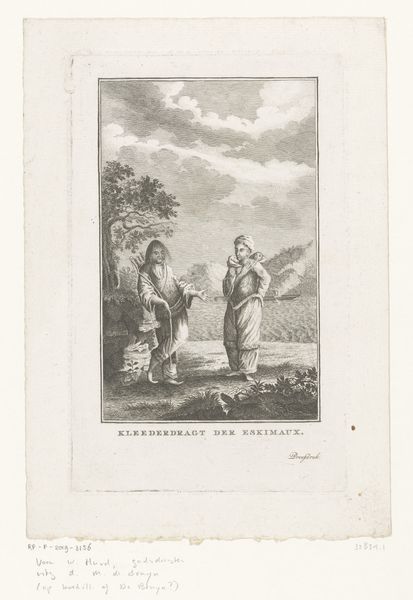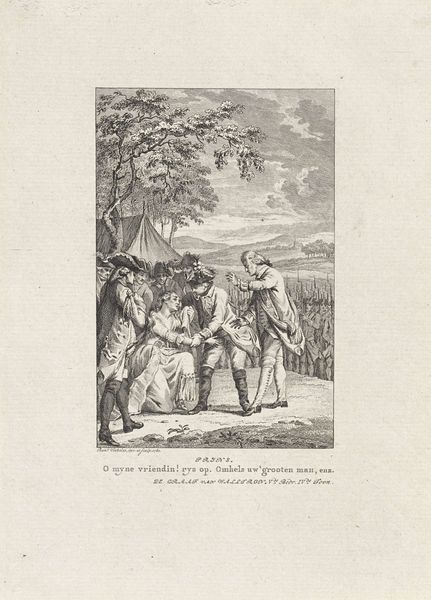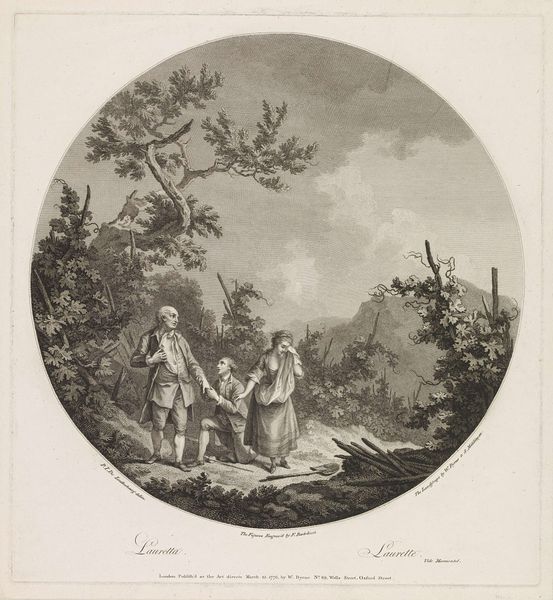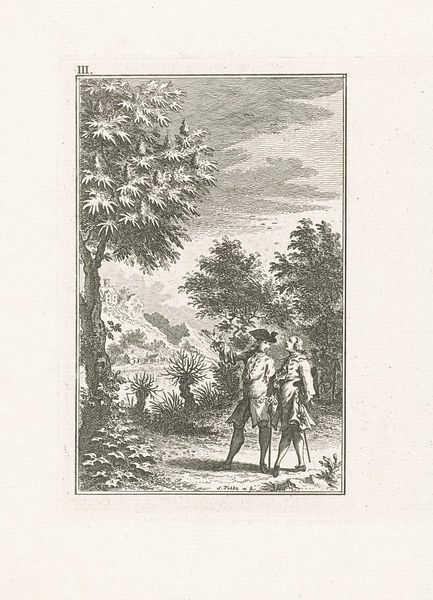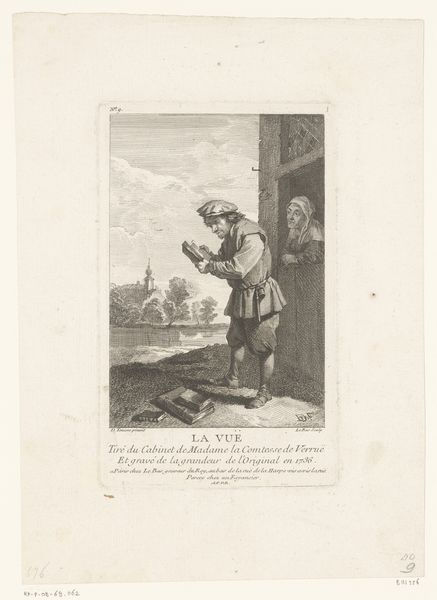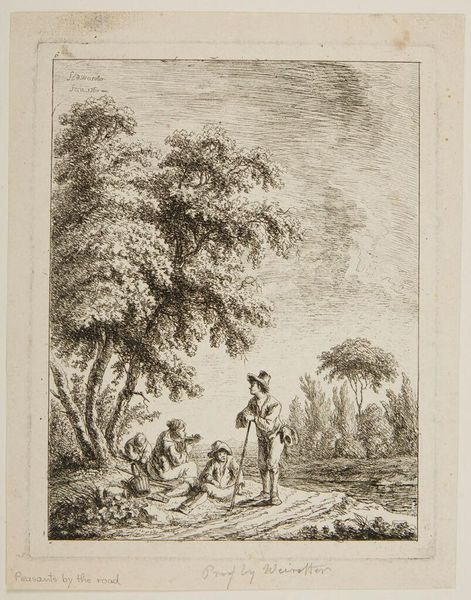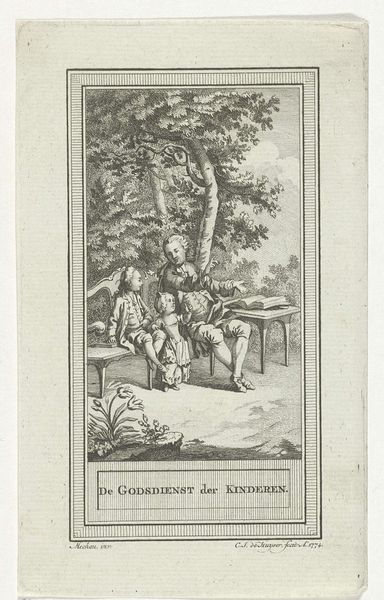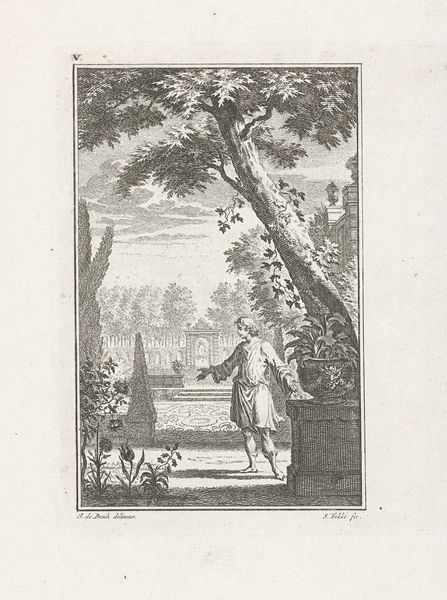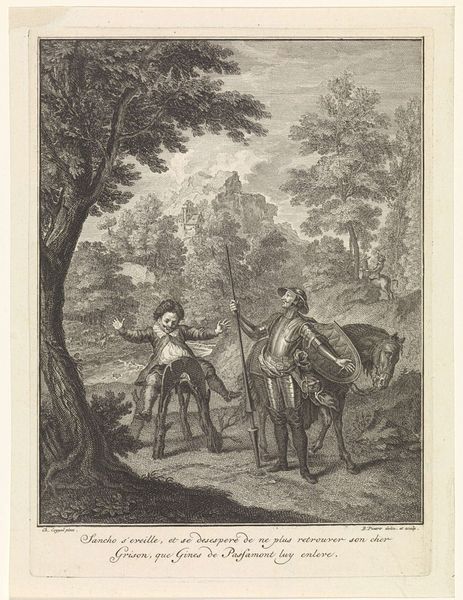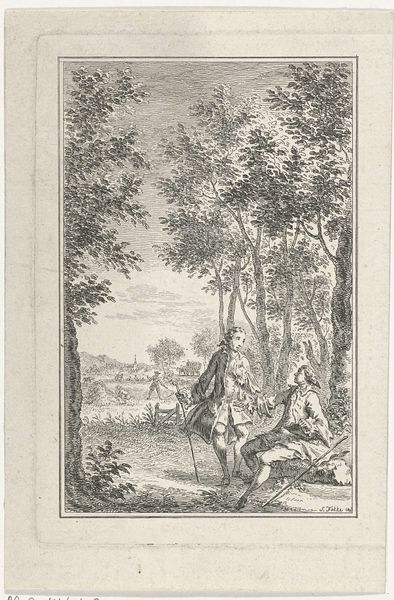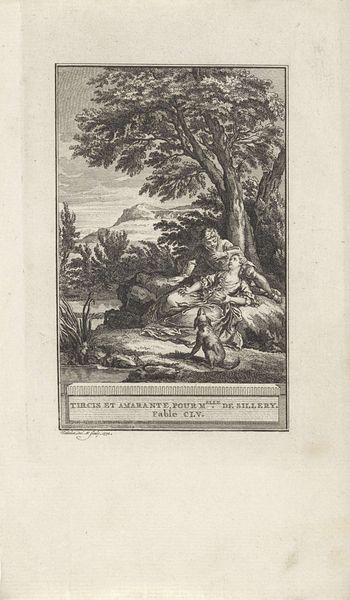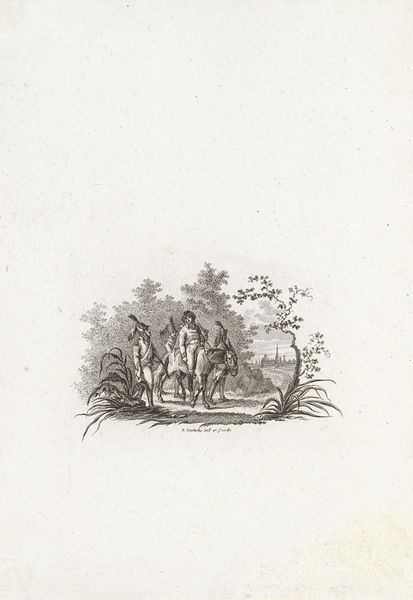
Twee jongens zetten nest jonge vogels terug in boom 1781 - 1799
0:00
0:00
Dimensions: height 133 mm, width 103 mm
Copyright: Rijks Museum: Open Domain
Curator: This delightful etching, created between 1781 and 1799, is titled "Twee jongens zetten nest jonge vogels terug in boom," or "Two boys putting a nest of young birds back in a tree." Editor: My immediate impression is how meticulously rendered this piece is for such an ordinary scene. It speaks to a certain sentimentality towards rural life, or an idealized one at least. Curator: Precisely. Created by Jan Lucas van der Beek, it's an early example of genre painting rendered in print form, perfectly capturing late 18th-century sensibilities around nature and childhood. Look at how the text at the top echoes this, with the words “Tendre sensibilité," suggesting tenderness and sensibility. Editor: Yes, and I’m drawn to the boys' labor; their hands working to restore balance, righting a perceived wrong. The way van der Beek detailed the etching; the wood of the ladder, the boys' simple clothes, the pastoral scenery…it speaks volumes about the means of production behind these idyllic images and their consumption by the upper classes. Curator: Absolutely. The image promotes a specific vision, it upholds values tied to virtue and empathy while simultaneously revealing the artist's position. How is he situated relative to his subject? Is he making comment, or passively recording some moment? It leaves a lot to consider. Editor: The composition itself subtly reinforces social hierarchies. The boys’ work within a broader landscape dotted with symbols of agrarian life. In front we see a worn, wooden fence while in the background we observe a windmill and grazing livestock. Van der Beek invites viewers to observe how labor interacts with its immediate surroundings. Curator: Considering it through an intersectional lens allows us to examine how art reflects or reinforces these systems, the representation of the vulnerable in service of greater ideals... I'm struck by the lack of female figures represented; how does that influence our reading of care and nurture? Editor: Interesting. For me, what stands out is the tangible nature of the image. The engraving lines themselves become a part of the story, reflecting both the artist's craft and the subject’s world. Curator: I'll consider it, framing how our perceptions are intrinsically tied to societal constructs... and that makes viewing these works relevant even today. Editor: It’s amazing to witness how seemingly simple scenes hold such complex layers of meaning once we examine the social and material conditions that shape them.
Comments
No comments
Be the first to comment and join the conversation on the ultimate creative platform.
